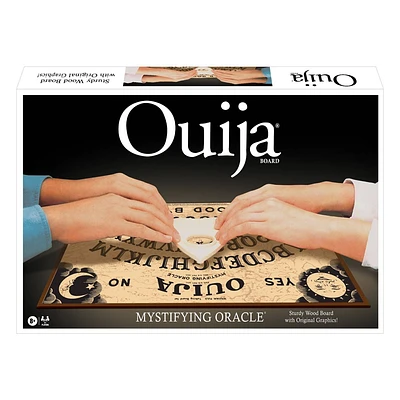Home
Jap Herron: A Novel Written from the Ouija Board
Loading Inventory...
Barnes and Noble
Jap Herron: A Novel Written from the Ouija Board
Current price: $18.95


Barnes and Noble
Jap Herron: A Novel Written from the Ouija Board
Current price: $18.95
Loading Inventory...
Size: OS
*Product Information may vary - to confirm product availability, pricing, and additional information please contact Barnes and Noble
The 1917 book purportedly dictated from beyond the grave by Mark Twain.
Was Jap Herron the work of Mark Twain or a scam that capitalized on the heightened belief in the paranormal during the early 20th century? We invite everyone to read and decide for themselves... or let the Ouija board decide.
Several years after Mark Twain’s death in 1910, Emily Grant Hutchings claimed that Twain dictated this novel from the beyond, letter by letter, over a Ouija board. She went on to publish it with Mitchell Kennerley in 1917. When the Twain estate discovered the book, they took Hutchings to court, demanding that she either declare herself a fraud or surrender all profits and rights to the estate. The lawsuit was dropped when Hutchings agreed to cease publication and destroy the remaining unsold books—but she never retracted her claims.
Set in the antebellum South, Jap Herron’s title character (Jasper James Herron) rises out of poverty to become a central figure in his small Missouri town. In a lengthy introduction, Hutchings recounts unidentified spirits meddling with the story, apparitions sent by Twain to haunt the medium’s dreams, and insights into Twain’s postmortem personality.
Was Jap Herron the work of Mark Twain or a scam that capitalized on the heightened belief in the paranormal during the early 20th century? We invite everyone to read and decide for themselves... or let the Ouija board decide.
Several years after Mark Twain’s death in 1910, Emily Grant Hutchings claimed that Twain dictated this novel from the beyond, letter by letter, over a Ouija board. She went on to publish it with Mitchell Kennerley in 1917. When the Twain estate discovered the book, they took Hutchings to court, demanding that she either declare herself a fraud or surrender all profits and rights to the estate. The lawsuit was dropped when Hutchings agreed to cease publication and destroy the remaining unsold books—but she never retracted her claims.
Set in the antebellum South, Jap Herron’s title character (Jasper James Herron) rises out of poverty to become a central figure in his small Missouri town. In a lengthy introduction, Hutchings recounts unidentified spirits meddling with the story, apparitions sent by Twain to haunt the medium’s dreams, and insights into Twain’s postmortem personality.


















